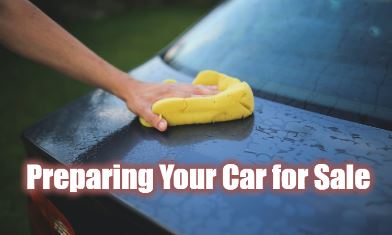When it comes time to sell my car, the process can seem straightforward—until you realize there’s still a loan or lease attached to it. Selling a car under financial obligation requires careful consideration and strategic planning. This guide will walk you through the steps to successfully navigate this complex transaction.
Understanding Your Loan or Lease Agreement
When considering selling a car that’s under a loan or lease, the first and most critical step is to thoroughly understand your financial agreement. This document holds the key to the terms and conditions you agreed to when you financed or leased your vehicle, and it will dictate the options available to you in the selling process.
Know Your Payoff Amount
The payoff amount is not the same as the remaining balance on your monthly statements. It includes the total amount you owe, including any interest and fees for the duration of the loan if you were to pay it off early. Contact your lender to get the exact payoff amount.
Check for Prepayment Penalties
Some loan agreements include prepayment penalties that could affect the cost of selling your car. These are fees charged by the lender if you pay off your loan early, which can sometimes be a significant amount. Make sure you know if these apply to you and factor them into your selling price.
Understand Lease Terms and Buyout Options
If you’re leasing, you’ll need to understand the terms for ending your lease early. Most lease agreements include a buyout option, which is the amount you can pay to purchase the car outright before the lease term ends. This figure is typically the residual value of the car plus any remaining payments and possible additional fees.
Transferability of the Lease
Some leases can be transferred to another party, which can be an attractive option for potential buyers. However, not all financial institutions allow transfers, and those that do often require a credit check for the new lessee and may include a transfer fee.
Gather All Necessary Documentation
Ensure you have all the necessary documentation on hand. This includes your loan or lease agreement, monthly statements, and any correspondence with your lender regarding your account. Having these documents readily available will help you answer buyer inquiries and facilitate a smoother transaction.
Consult with Your Lender
Open a line of communication with your lender early in the process. They can provide detailed information about your account and may even offer services to facilitate the sale. Some lenders will work directly with the buyer’s lender to streamline the payoff process.
Legal and Tax Implications
Be aware of any legal or tax implications that may arise from selling your car with a loan or lease. In some cases, there may be tax benefits or obligations associated with the sale, and it’s important to understand these to avoid surprises after the transaction.
Trade-In Alternatives: Dealerships and Instant Cash Offers
Sometimes, the convenience of trading in your car or receiving cash for junk cars from dealerships can outweigh the benefits of a private sale. Dealerships may offer instant cash offers, which can be a quick way to sell your car without the hassle of private sale negotiations.
Navigating Loan Payoff During a Sale

Understanding how to manage the loan payoff is essential when selling a car with a loan. You’ll need to coordinate with your lender to handle the payoff process, which may involve using the sale proceeds to clear the loan balance.
Communicate with Your Lender
Begin by informing your lender of your intent to sell the car. They can guide you through their process for handling the sale of a car with an outstanding loan. Some lenders may offer online services to manage payments and provide up-to-date payoff amounts, which can be very convenient.
Obtain an Official Payoff Quote
Request an official payoff quote from your lender. This document will state the exact amount you need to pay to settle your loan in full and should include any additional fees or penalties that may apply if you pay off your loan early.
Understand the Timeline
Payoff quotes are typically valid for a short period, often up to 10 days. This means you need to complete the sale and process the payment to the lender within this window to ensure the quoted amount is accurate.
Arrange for Payment
If the sale price of the car covers the payoff amount, you can use the buyer’s payment to pay off the loan directly. However, if the sale price is less than the payoff amount, you will need to provide the additional funds to cover the difference.
Handling Overpayment
In cases where the sale price exceeds the loan payoff amount, the lender will usually send you a check for the balance. It’s important to confirm this process with your lender beforehand.
Title Transfer
The lender holds the title to the car until the loan is paid off. Once you’ve paid off the loan, the lender will release the title. Depending on your state’s laws and the lender’s practices, they may send the title directly to the buyer or to you, which you will then sign over to the buyer.
Consider an Escrow Service
For added security and to facilitate the transaction, you might consider using an escrow service. This third-party service can hold the buyer’s payment and only release the funds to the lender and you once all conditions of the sale are met.
Provide a Bill of Sale
While the loan payoff and title transfer are being processed, provide the buyer with a bill of sale. This document should include the sale price, VIN, and an agreement that the title will be transferred once the loan is paid off.
Confirm Loan Closure
After the loan is paid off, confirm with your lender that the loan account has been closed. This will prevent any future misunderstandings about the loan status.
Navigating the loan payoff during a sale is a delicate process that requires transparency, coordination, and sometimes a bit of negotiation. By following these steps, you can ensure that the payoff is handled smoothly and that the transfer of ownership is completed without any legal loose ends.
Lease Buyouts: What Sellers Need to Know

If you’re leasing, a buyout can be an attractive option for potential buyers. Here’s how to handle it: You can either pay off the lease yourself and sell the car as a free-and-clear title or facilitate a lease transfer where the buyer takes over the lease terms.
Selling a car, you’re currently leasing is a unique situation that involves a process called a lease buyout. This is when you opt to purchase the vehicle from the leasing company before the end of your lease agreement. It’s a path some choose to take when they decide to sell their leased vehicle, either to a dealership or a private party. Understanding the intricacies of a lease buyout is crucial for a smooth transaction.
Review Your Lease Agreement
The first step in considering a lease buyout is to thoroughly review your lease agreement. This contract will contain a buyout clause that outlines the terms under which you can purchase the vehicle. It’s important to understand these terms fully, as they will affect the financial aspect of the buyout.
Calculate the Buyout Price
The buyout price is typically a combination of the residual value of the car at the end of the lease, any remaining payments, and possibly a purchase option fee. The residual value is predetermined at the start of your lease and is an estimate of the car’s value at lease end. You’ll need to contact your leasing company to get the exact buyout amount.
Timing the Buyout
Timing is a critical factor in a lease buyout. If you buy out the lease too early, you might incur additional fees. It’s essential to weigh the costs of an early buyout against the potential sale price of the car. Sometimes waiting until the end of the lease may be more cost-effective, but if market conditions are right, an early buyout could be beneficial.
Financial Considerations
Before proceeding with a lease buyout, assess the car’s current market value. If the market value is higher than the buyout price, it could be a financially sound decision to proceed with the buyout and then sell the vehicle. However, if the market value is less, you may end up at a financial loss.
Secure Financing
If you’re not in a position to pay the buyout price in cash, you’ll need to secure financing. This is similar to taking out a loan to purchase a car. Shop around for the best loan rates and terms to ensure that you’re getting a good deal. Remember, the interest on the loan will add to the total cost of the buyout.
Negotiating with the Leasing Company
Sometimes, there’s room to negotiate the buyout price with the leasing company, especially if you’re nearing the end of your lease. It’s worth having a discussion with them to see if they’re willing to offer a better deal, particularly if the car has depreciated more than expected.
Handling the Transaction
Once you’ve decided to proceed with a lease buyout, you’ll need to handle the transaction carefully. This involves coordinating with the leasing company to pay the buyout amount and obtain the vehicle’s title. Only after you have the title in your possession can you legally sell the car.
Selling the Car Post-Buyout
After the buyout, the car is yours to sell. You can choose to sell it privately, which may net you a higher sale price, or sell it to a dealership for convenience. If selling privately, ensure the car is in good condition, and all necessary paperwork is in order to facilitate a smooth sale.
Preparing Your Car for Sale

First impressions count. Preparing your car for sale, from detailing to necessary repairs, can significantly increase its marketability. A well-maintained car can command a higher price and make it easier to sell, even with a loan or lease.
Clean and Detail
- Thoroughly clean the interior and exterior: A spotless vehicle is more attractive to buyers.
- Detail the car: Consider a professional detailing service to make your car shine, inside and out.
Maintenance and Repairs
- Perform routine maintenance: Oil changes, tire rotations, and fluid top-ups show a well-maintained vehicle.
- Address minor repairs: Fixing small issues can prevent buyers from haggling the price down.
Documentation
- Gather maintenance records: Prove your car’s upkeep history to reassure buyers.
- Get a vehicle history report: This report can boost a buyer’s confidence in the transparency of the sale.
Visual Appeal
- Touch up paint scratches: Small touch-ups can improve the overall look of your car.
- Replace small items: Floor mats, wiper blades, and other inexpensive items can refresh the car’s appearance.
Mechanical Soundness
- Inspect the car: Have a mechanic inspect the car and certify its condition.
- Make necessary repairs: If there are any significant issues, consider repairing them to increase the car’s value.
Pricing Strategy
- Research your car’s value: Use online tools to determine a fair asking price.
- Set a competitive price: Price your car competitively to attract interest.
Legal Paperwork
- Prepare necessary documents: Have the title, bill of sale, and release of liability ready.
Advertising
- Take quality photos: Good photos from various angles will showcase your car’s best features.
- Write a compelling description: Highlight key selling points, recent upgrades, and any unique features.
The Benefits of Selling Privately
Selling your car privately often yields a higher price than trading it in. We’ll discuss how to maximize your sale price and the advantages over trading in your vehicle. Private sales allow for direct negotiation with buyers, potentially leading to a better deal for both parties.
How to Sell My Car Online Effectively
Online platforms can expand your pool of potential buyers. Learn the best practices for selling your car online, including taking high-quality photos, writing a compelling description, and being transparent about the car’s condition and history.
Resources and Services to Help You Sell
Discover tools and services that can assist you in the selling process, including how to get cash for your used car. Utilize these resources to streamline your sale and potentially get a better deal.
By following this guide, you’ll be equipped with the knowledge to sell your car confidently, even with a loan or lease. With the right preparation and understanding of the process, you can navigate this complex transaction and move on to your next vehicle with ease.
FAQs: Selling Your Car with Financial Obligations
Yes, you can sell a car even if you have an outstanding loan. However, you will need to pay off the loan in full before you can transfer ownership to the buyer. This typically involves using the proceeds from the sale to clear the loan balance.
If your car is worth less than the amount you owe, this is known as being “upside down” or having negative equity. In this case, you will need to pay the difference between the sale price and the loan balance. This can be done with cash or by taking out a personal loan to cover the shortfall.
To handle the loan payoff, you should contact your lender to get the payoff amount. If the sale price covers the payoff, you can use the buyer’s payment to settle the loan. If the sale price is less, you’ll need to provide additional funds. Once the loan is paid off, the lender will release the lien and transfer the title to the buyer.
Some leases allow for a lease transfer, where another party takes over the lease agreement. However, not all financial institutions permit this, and those that do usually require a credit check for the new lessee and may charge a transfer fee.
A lease buyout is an option in a lease agreement that allows you to purchase the leased vehicle either during the lease term or at the end. If you decide to sell the car, you would first buy it from the leasing company and then proceed to sell it to the buyer as you would with any other car you own.
Yes, you should inform your lender or leasing company if you plan to sell the vehicle. They can provide specific instructions and requirements for the sale process according to your agreement.
Yes, you can sell your car to a dealership with a loan or lease. Dealerships are experienced in handling these transactions and can pay off the loan or facilitate a lease buyout as part of the sale process.
You will need the loan or lease agreement, account statements showing your payoff amount, a bill of sale, and any other documents your lender or leasing company requires. Once the loan is paid off, you will also need the title to transfer ownership to the buyer.
